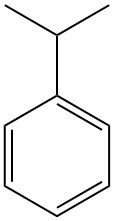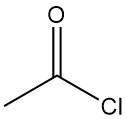
Tetrachloromethane, also known as carbon tetrachloride, is an organic compound with the formula CCl4. It is a colorless volatile liquid with a characteristic odor that was used as an industrial solvent with a wide range of applications. However, its potent toxicity and harmful environmental impact have led to a significant decline in its use in recent decades.
Table of Contents
1. Physical Properties of Tetrachloromethane
Tetrachloromethane is a colorless, volatile liquid possessing a characteristic odor that was formerly used as a solvent owing to its exceptional ability to dissolve numerous organic substances.
However, concerns regarding its inherent toxicity and its detrimental effect on the ozone layer (ozone-depleting potential of 1.1) have led to its complete abandonment as a solvent.
Carbon tetrachloride forms constant-boiling azeotropic mixtures with a diverse range of substances.
| Property | Value |
|---|---|
| Molecular weight (g/mol) | 153.82 |
| Boiling point at 1 bar (°C) | 76.8 |
| Melting point (°C) | −23.0 |
| Vapor pressure at 20 °C (mbar) | 123 |
| Enthalpy of vaporization (kJ/mol) | 30.14 |
| Enthalpy of fusion at mp (kJ/mol) | 2.5 |
| Density of liquid at 20 °C (kg/m³) | 1594.0 |
| Density of vapor at bp (kg/m³) | 5.508 |
| Cubic expansion coefficient of liquid (0–40 °C) (K⁻¹) | 0.00124 |
| Enthalpy of formation of vapor at 25 °C, 1 bar (kJ/mol) | −102.9 |
| Gibbs free energy of formation of vapor at 25°C, 1 bar (kJ/mol) | −60.59 |
| Specific heat capacity of vapor at 25°C, 1 bar (kJ kg⁻¹ K⁻¹) | 0.542 |
| Enthalpy of formation of liquid at 25°C (kJ/mol) | −135.44 |
| Gibbs free energy of formation of liquid at 25°C (kJ/mol) | −65.21 |
| Specific heat capacity of liquid at 25 °C (kJ kg⁻¹ K⁻¹) | 0.857 |
| Critical temperature Tc (°C) | 283 |
| Critical pressure (atm) | 45.0 |
| Critical volume (mL/mol) | 0.27584 |
| Critical compressibility factor | 0.27233 |
| Thermal conductivity of vapor (W K⁻¹ m⁻¹) | 0.00730 |
| Thermal conductivity of liquid at 20°C (W K⁻¹ m⁻¹) | 0.118 |
| Surface tension at 20°C (10⁻³ N/m) | 26.7 |
| Viscosity of liquid at 20 °C (cP) | 0.969 |
| Dipole moment | 0.0 |
| Refractive index of liquid at 25 °C | 1.4598 |
| Dielectric constant of vapor at 20 °C | 1.00 |
| Dielectric constant of liquid at 20 °C | 2.22 |
| Partition coefficient air/water at 20 °C | 0.91 |
| Partition coefficient n-octanol/water at 20°C as log Pow | 2.83 |
2. Chemical Properties of Tetrachloromethane
While nonflammable, tetrachloromethane undergoes thermal decomposition upon exposure to high temperatures or flames. Above 300 °C, it decomposes into hydrogen chloride (HCl), and with the presence of air and metals like steel, it forms phosgene (COCl2).
At 400°C, decomposition of carbon tetrachloride towards tetrachloroethene (C2Cl4) is slower but common in the presence of most metals (excluding aluminum and light metals). Above 500–600 °C, an equilibrium reaction involving the formation of chlorine (Cl2) from CCl4 becomes increasingly dominant, reaching over 70% conversion at 900 °C and atmospheric pressure.
2 CCl4 ⇌ C2Cl4 + 2 Cl2
Tetrachloromethane does not hydrolyze in pure water at neutral pH and room temperature, with a half-life exceeding 70,000 years. However, this reaction is accelerated in the presence of ions like phosphate and at higher pH values.
The reaction of ethylene and vinyl derivatives with tetrachloromethane under pressure and in the presence of peroxides is known as Kharasch addition.
CH2=CH2 + CCl4 → Cl3C-CH2-CH2Cl
This reaction is used in preparative and industrial applications, mainly in the synthesis of agrochemicals and hydrofluoroolefins like tetrafluoropropenes (R-1234), hexafluorobutenes (R-1336), and hydrochlorofluoro-olefins like chloro-3,3,3-trifluoropropene (R-1233).
Prior to the 1980s, the major industrial reactions involving tetrachloromethane included its liquid-phase conversion with anhydrous hydrogen fluoride and antimony (III/V) fluorides to produce trichloromonofluoromethane (CFC-11), dichlorodifluoromethane (CFC-12), and monochlorotrifluoromethane (CFC-13).
Carbon tetrachloride forms shock-sensitive and explosive mixtures with alkali and alkaline earth metals, demanding caution in handling.
3. Production of Tetrachloromethane
Tetrachloromethane is produced by the direct chlorination of methane or chloromethane with chlorine. It is formed as a byproduct in the synthesis of dichloromethane and trichloromethane and accounts for only 3% of the total chloromethanes production volume.
CH4 + Cl2 → CH3Cl + CH2Cl2 + CHCl3 + CCl4 + HCl
The raw materials used in this process are high-purity chlorine, highly purified methane from cryogenic distillation to minimize close-boiling impurities, or monochloromethane produced from methanol hydrochlorination.
The chlorination reaction is a serial substitution reaction with low selectivity, which is mainly determined by the chlorine-to-carbon feed ratio and reactor design. Increasing the amounts of dichloromethane, trichloromethane, and tetrachloromethane produced with an increasing chlorine-to-methane ratio.
Fraction distillation of the chlorinated methanes mixture produces pure individual product (carbon tetrachloride).
The HCl formed is quenched, absorbed in an aqueous solution, and neutralized with caustic soda in the wet process. In the dry process, it is absorbed in the chlorinated methanes (e.g., tetrachloromethane or trichloromethane mixture) and then separated by distillation.

a) Loop reactor; b) Process gas cooler; c) Quench; d) Gas/liquid separator; e) HCl absorption; f) Neutralization system; g) Sulfuric acid drying column; h) Compressor; i) First condensation step; j) Second condenser; k) Condensate buffer vessel; l1–l4) Distillation columns for CH3Cl, CH2Cl2, CHCl3 and CCl4
4. Uses of Tetrachloromethane
Tetrachloromethane was historically used in the synthesis of chlorofluorocarbons (CFCs). These included CFC-11 (trichlorofluoromethane), CFC-12 (dichlorodifluoromethane), and CFC-13 (chlorotrifluoromethane), widely employed as refrigerants (R-11, R-12, R-13), propellants in spray cans, fire extinguishers, textile cleaning, and blowing agents in polyurethane and polystyrene foams.
However, their production and use were restricted under the Montreal Protocol in 1987 due to their significant ozone-depleting potential (ODP: 1.0 each). A global phase-out was achieved by 1996, with exceptions for essential uses lacking suitable substitutes.
This resulted in a dramatic decline in production and emissions. Although officially phased out under the Montreal Protocol in 2010, illegal production and use, primarily in Asia, still cause noticeable emissions.
Modern applications of tetrachloromethane are restricted to enclosed, virtually emission-free industrial processes. It is used as a solvent for producing aramid fibers for bulletproof vests and heat-resistant safety clothing, as well as for specific laboratory analyses.
Additionally, it is a feedstock for hydrofluorocarbons (HFCs) like HFC-245fa (used in foam blowing and heat transfer) and HFC-365mfc (mixed with HCFC-227 for foam blowing and electronics cleaning).
Carbon tetrachloride is used for the synthesis of agrochemicals and hydrofluoroolefins (HFOs) like HFO-1234 and HFO-1336, along with hydrochlorofluoroolefins (HCFOs) like HCFO-1233. Alternative synthesis routes for HFOs involving HCFC-22 as an intermediate also exist.
Unlike saturated HFCs, HFOs and HCFOs readily degrade in the atmosphere due to their double bond, with a minimum global warming potential (GWP) under the Kyoto Protocol. They find applications as replacements for HFCs in refrigerants and foam blowing, although concerns regarding persistent breakdown products like trifluoroacetic acid remain.
5. Toxicology of Tetrachloromethane
Tetrachloromethane was once considered a “safety solvent” due to its non-flammability. However, its significant liver toxicity, ozone-depleting properties, and readily available safer alternatives have rendered its use as a general solvent obsolete. Today, it finds exclusive application as an intermediate in various industrial processes.
Single exposures generally pose minimal risk to eyes, skin, or ingesting small amounts. Repeated exposure, however, can lead to systemic toxicity, primarily affecting the liver and kidneys. In humans, kidney damage is often the main cause of death.
While high gas inhilation concentrations can induce anesthesia, transient liver and kidney injury occur at much lower levels, well below those causing incoordination. Individual susceptibility seems to play a role, with some experiencing nausea at concentrations others tolerate well.
Alcohol consumption is reported to exacerbate tetrachloromethane toxicity. Proper exposure control within recommended occupational standards should prevent such responses.
Carbon tetrachloride is not considered detrimental to reproduction, teratogenic in animals, or mutagenic in common test systems. However, chronic exposure increases liver tumor incidence in mice, likely linked to chronic liver tissue damage. The International Agency for Research on Cancer (IARC) classifies carbon tetrachloride as “possibly carcinogenic to humans (Group 2B).”
The recommended 8-hour occupational exposure limits (OELs) for tetrachloromethane generally range from 0.5 to 10 ppm.
Reference
- Chloromethanes; Ullmann’s Encyclopedia of Industrial Chemistry. – https://onlinelibrary.wiley.com/doi/10.1002/14356007.a06_233.pub4




